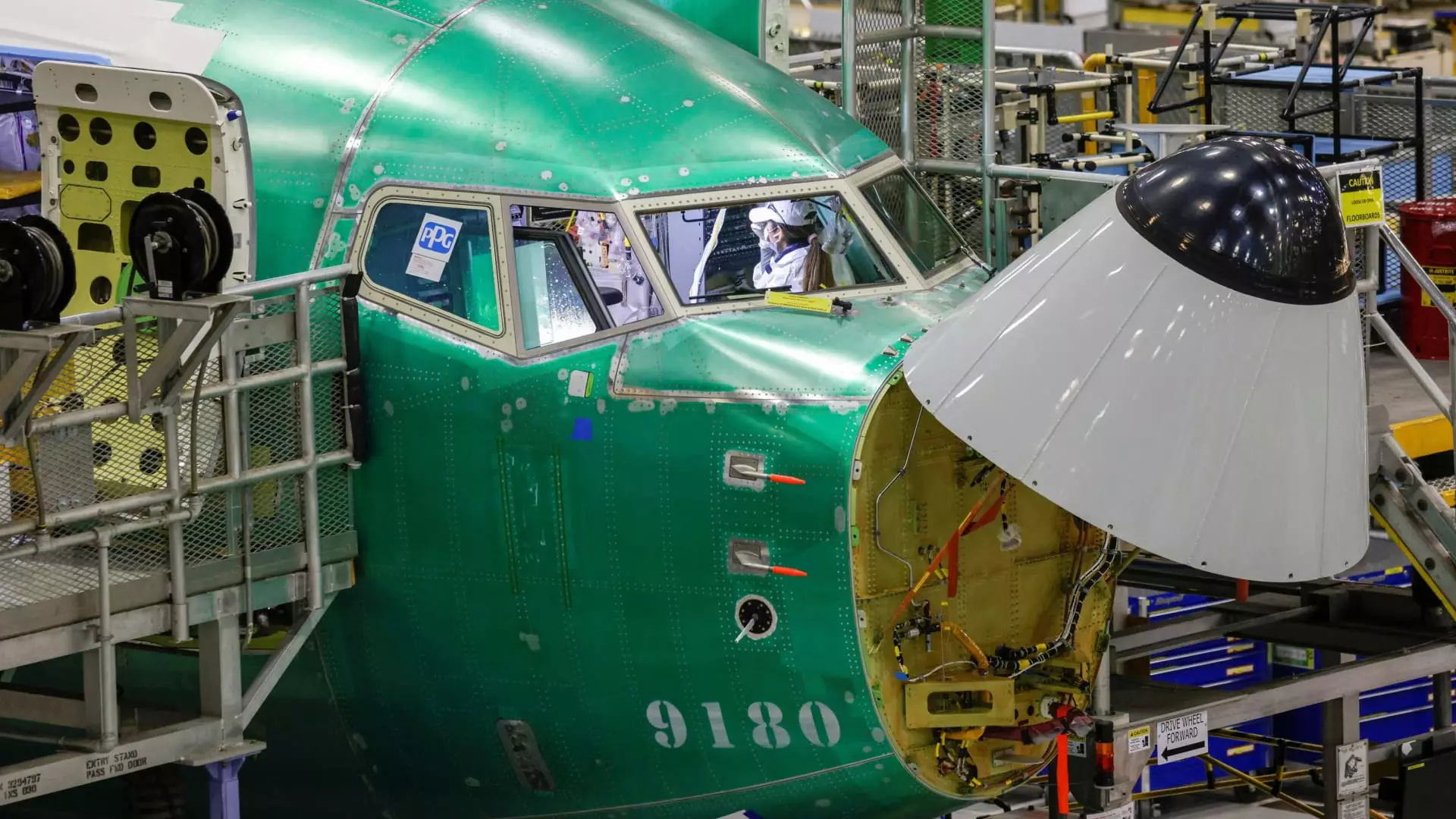Boeing recently emerged from a lengthy strike involving over 32,000 machinists, culminating in a return to work by the deadline set for Tuesday. While the workforce is now back on the factory floor, the challenge lies not just in resuming production, but in revitalizing operations that were significantly hampered over the past seven weeks. The strike, which began on September 13, saw machinists rejecting an initial contract proposal that promised 25% wage increases in favor of a new agreement that provided substantial raises of 38% over four years. This decisive action by the machinists ultimately led to the suspension of most aircraft production at Boeing — a major blow to the company’s output.
As Boeing’s manufacturing gears attempt to grind back into motion, a troubling reality surfaces: October marked a dismal record with only 14 jetliner deliveries, reminiscent of figures from November 2020 during the pandemic’s peak disruption. The deliveries comprised nine 737 Max models, yet the paltry numbers underscore a deepening rivalry with Airbus, who has outpaced Boeing this year with 559 aircraft handed over compared to Boeing’s 305. The supply chain complexities, intensified by the strike, have exacerbated Boeing’s position in the competitive aerospace market, necessitating a strategic review of both operational efficiency and workforce readiness as production resumes.
For Boeing, merely reinstating the workforce is insufficient. The company faces a multitude of operational hurdles including assessing workplace hazards, reintegrating staff, and updating safety requirements. Machinists’ duties must be revitalized, with a keen focus on ensuring that all personnel are compliant with current training protocols before full-scale production can recommence. Boeing’s CEO, Kelly Ortberg, highlighted the complexity of restarting operations, noting that “it’s much harder to turn this on than it is to turn it off.” His remarks suggest the need for a well-structured approach to re-engage the factory workforce effectively and safely.
Boeing’s primary production activities remain concentrated in Washington State and Oregon, focusing on the 737 Max, 767, and 777 programs, as well as various military aircraft. However, the stark reality is that their 787 Dreamliner production has remained operational during the strike, owing to its production being shielded in a non-union facility located in South Carolina. This strategic division may prove advantageous, allowing Boeing to partially cushion the blow from the strike while also fulfilling some customer obligations.
Despite the disruptions on the production floor, Boeing continued to secure sales, boasting 63 gross orders in October—a reflection of ongoing market demand. Notably, a significant portion of these orders were for the 737 Max, including 40 ordered by Avia Solutions Group. The company also managed to deliver 10 Dreamliners to LATAM Airlines during the same period. These sales figures present a silver lining, indicating that despite set-backs, there is still business confidence in Boeing’s offerings. Nevertheless, the road ahead is fraught with challenges; regaining lost momentum will require concerted efforts in production recovery, efficient workforce integration, and a keen focus on fulfilling an increasing backlog of aircraft orders to reclaim their competitive stature in aviation.

